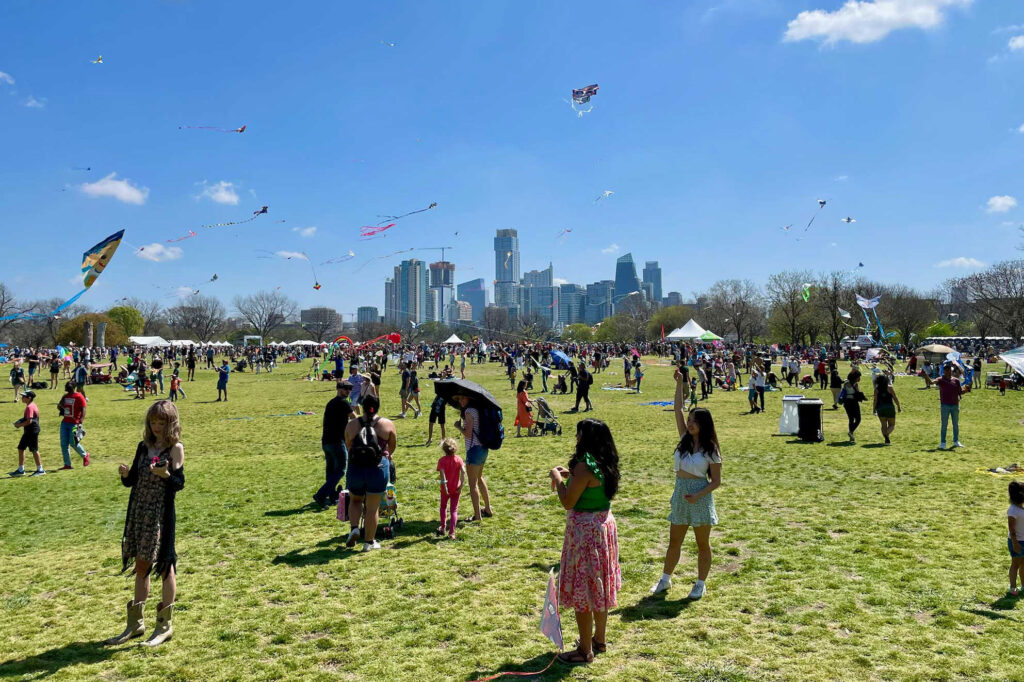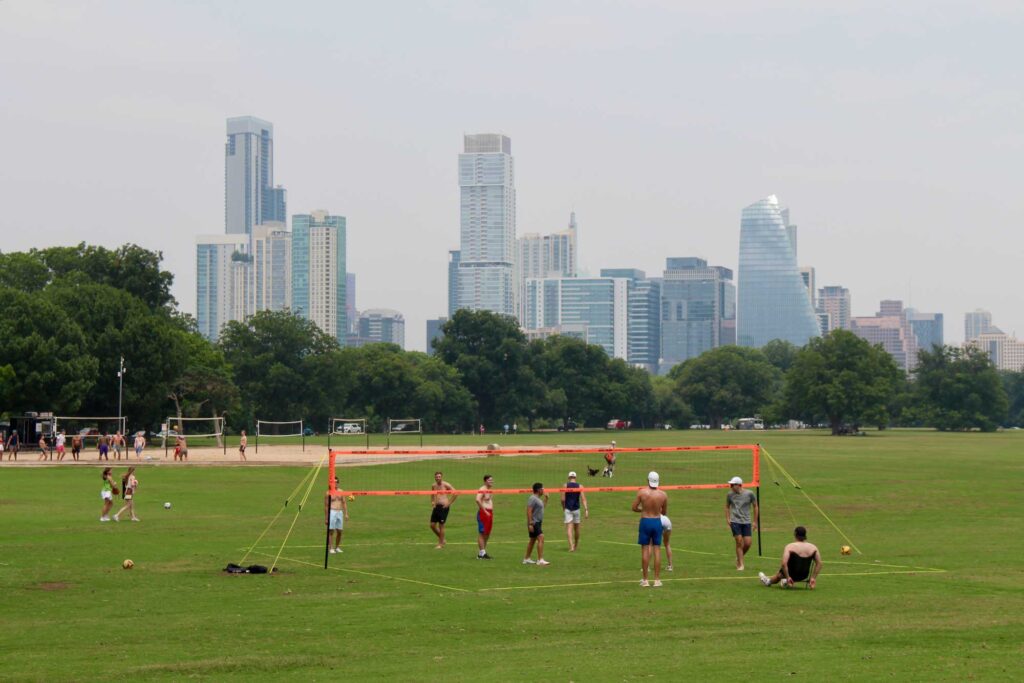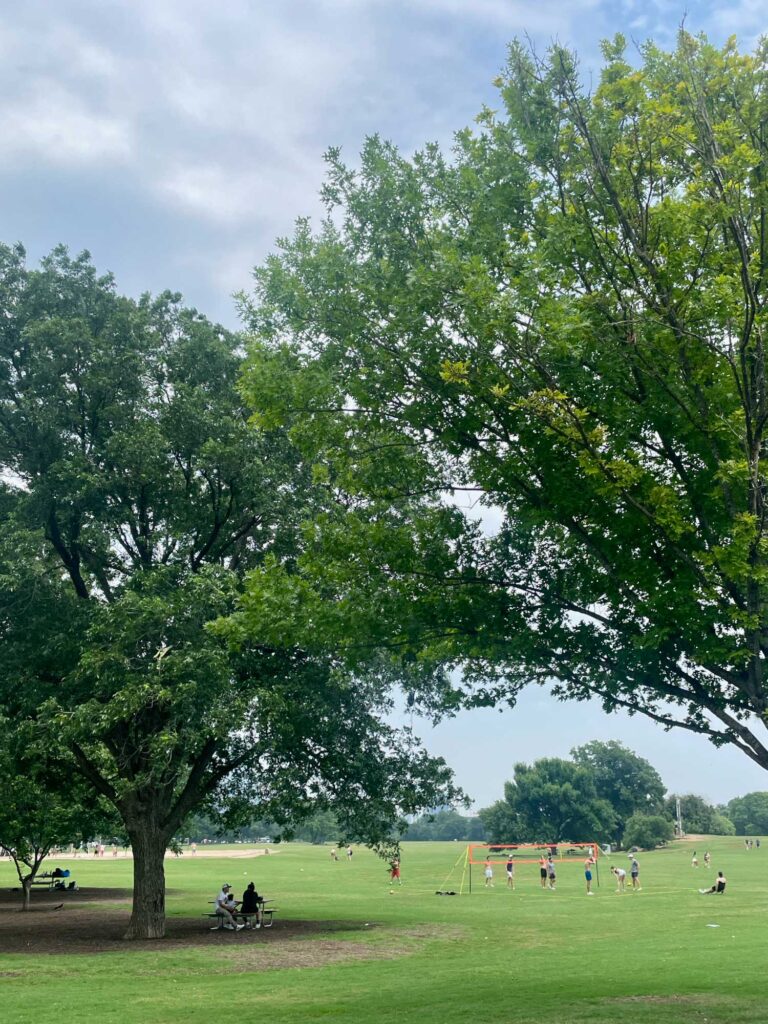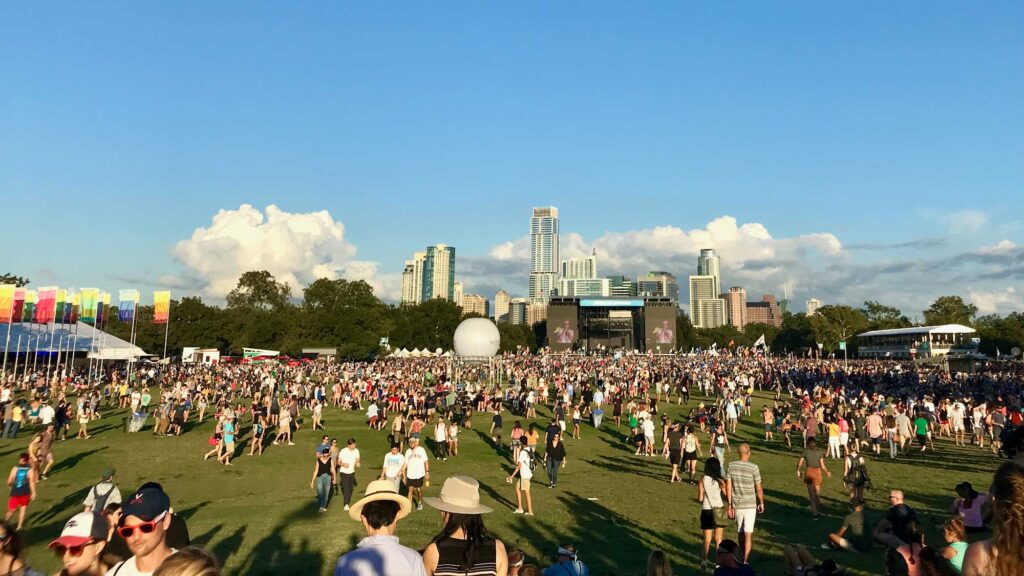Zilker Park was first established in 1917, but the area had been attracting people long before. Archeological sites show that Indigenous tribes camped, hunted, and quarried rock here for at least 9,000 years before Europeans arrived. The area was colonized by William Barton around 1837. Barton eventually sold his tract to Andrew Jackson Zilker, a businessman, politician, and philanthropist who used the area for his successful ice-making business before donating the land to the city in three separate grants between 1917 and 1933.
Zilker Park was not planned as much as it evolved. The springs—by then called Barton Springs—had been in use by the public since the 1870s, but it was in 1933 that the park was given its first formal layout by architect Charles Page. Page envisioned a greensward with open spaces along the river, while protecting existing wooded areas on the western bluff. That plan set the tone for the park; it was to be a natural outdoor setting for the public to enjoy. The Page plan was not a construction plan so much as it was a mission statement to preserve recreational space for Austin. Hiking, picnicking, and observation of nature were the goals. Pedestrian and horseback day use was encouraged—as was a scenic auto loop route. A bathouse and concession stand were built in the 1920s, followed by a baseball diamond and clubhouse.
In the years following the Great Depression, gardens, outdoor amphitheaters, and overlooks were built from local limestone through the combined efforts of the Civil Works Administration (CWA), Civilian Conservation Corps (CCC), and Works Progress Administration (WPA). Winding car, horse, and pedestrian paths were planned and planted with young saplings, which have since become the majestic trees that shade the park today.
The park and springs were quite popular in the 1930s, and public use increased with additional nature related activities and structures added over the years. In 1946, the bathhouse at Barton Springs was rebuilt in clean-lined Mid-Century Modern style, receiving architectural acclaim for its open air plan and relationship to its unique natural setting. Additional tourist features like the Zilker Eagle mini-train and a larger concession stand were added in the 1960s. In the following decades, the Zilker Botanical Gardens, the Taniguchi Japanese Gardens and the Nature & Science Center further expanded the use of the park.
In the 1970s, the natural harmony of the park was disrupted by the rerouting and expanded use of Barton Springs Boulevard, and then severed again by the construction of the MoPac Highway. Presently, a new master plan for the park is under consideration in hopes of striking a balance between the competing challenges of greater visitation and greater preservation.
Today, Zilker Metropolitan Park plays host to some of the city’s most famous and beloved seasonal events: Kite Fest at the start of spring, Blues on the Green concert series throughout the summer, Austin City Limits Music Festival in the fall, and the Trail of Lights each winter. Even as the skyline beyond the Great Lawn continues to change and grow, Zilker remains a constant source of recreation and respite. – Derek Barcinski, AIA




